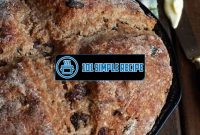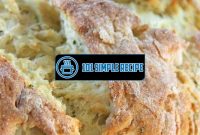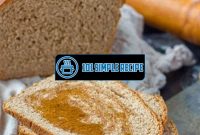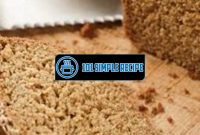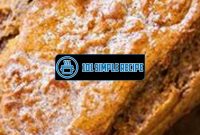Are you a culinary enthusiast longing to explore new flavors and showcase your creativity in the kitchen? Look no further! Frozen bread dough is the secret weapon you’ve been missing. With its versatility and convenience, frozen bread dough opens up a world of possibilities for your culinary creations. Whether you’re a beginner or a seasoned home cook, this article will guide you on how to unleash your culinary creativity and transform frozen bread dough into a variety of delectable dishes. So, put on your apron, and let’s get started on this tasty adventure!
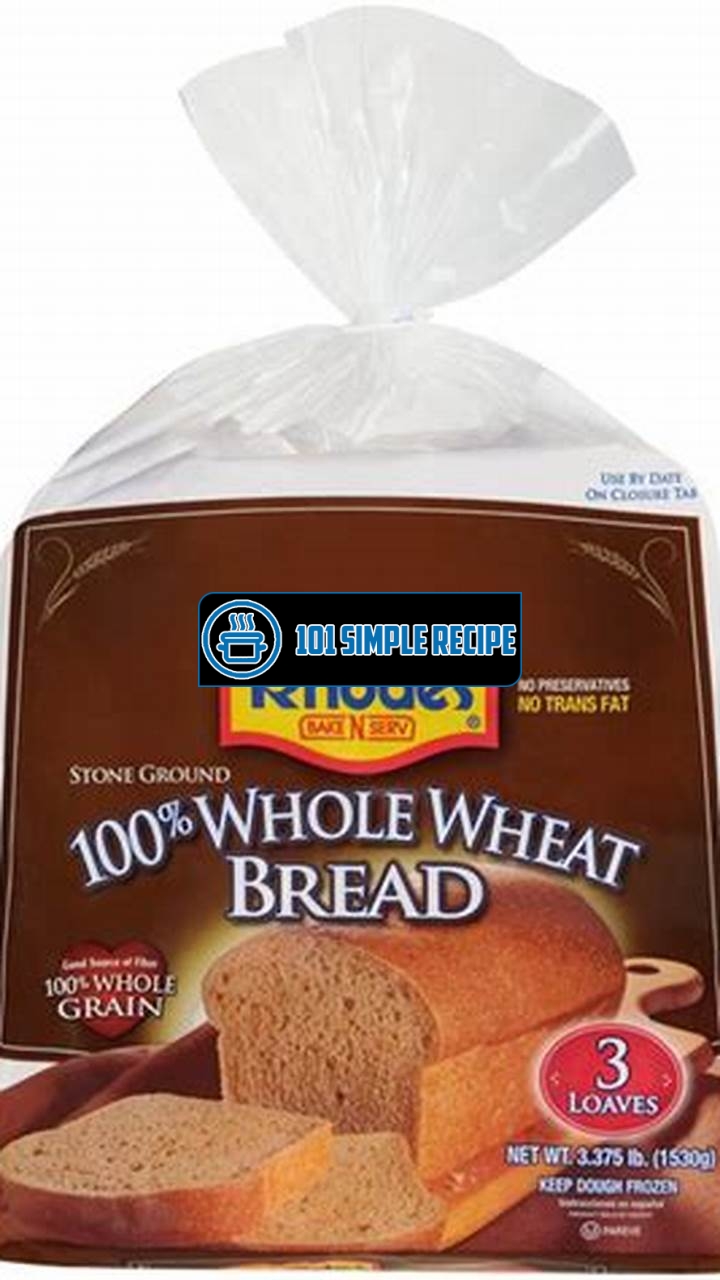
Understanding Frozen Bread Dough
Frozen bread dough is a versatile kitchen staple that can unlock your culinary creativity in numerous ways. From its convenience to its ability to produce delicious homemade bread, frozen bread dough offers a multitude of benefits for both amateur cooks and professional chefs alike.
What sets frozen bread dough apart is its state when purchased. Unlike traditional bread dough that is already risen or ready to be kneaded, frozen bread dough is sold in a frozen state, hence the name. This means it needs to be thawed and then allowed to rise before it can be baked into delicious bread. Frozen bread dough is typically made from the same basic ingredients as traditional bread dough, including flour, water, yeast, and salt.
One of the key advantages of using frozen bread dough is its convenience. With frozen bread dough readily available in most grocery stores, you can skip the laborious process of measuring and mixing ingredients from scratch. This saves you time and effort, making it ideal for busy individuals who still want to enjoy the taste and aroma of freshly baked bread without the extensive preparation. Simply take the frozen dough out of the freezer, let it thaw, let it rise, and then bake it to perfection.
Another benefit of utilizing frozen bread dough is its versatility. While it can be used to make classic bread loaves, this dough can also be shaped into various other forms such as rolls, buns, braided bread, or even pizza crusts. The possibilities are endless! Let your imagination run wild and experiment with different shapes and flavors to create unique and mouthwatering creations. From savory herb and cheese rolls to sweet cinnamon buns, frozen bread dough allows you to explore a wide range of culinary possibilities.
Furthermore, frozen bread dough is an excellent option for novice bakers or those who are still honing their baking skills. The dough is forgiving and easy to work with, making it less intimidating for beginners. With practice, you can master the art of using frozen bread dough and impress your family and friends with your homemade bread and pastry creations.
What is Frozen Bread Dough
Frozen bread dough is a type of dough that is sold in a frozen state and needs to be thawed and allowed to rise before baking. It typically consists of basic ingredients like flour, water, yeast, and salt. Unlike pre-risen or ready-to-knead dough, frozen bread dough requires some preparation before it can be baked into fresh bread.
When purchasing frozen bread dough, it is essential to check the expiration date to ensure its freshness. Additionally, it is crucial to follow the thawing and rising instructions provided by the manufacturer to achieve the best results.
The Benefits of Using Frozen Bread Dough
Using frozen bread dough offers several advantages for both amateur and experienced bakers. Some of the benefits include:
- Convenience: With frozen bread dough, you can skip the time-consuming process of measuring and mixing ingredients from scratch. It saves you time and effort while still allowing you to enjoy the taste and aroma of freshly baked bread.
- Versatility: Frozen bread dough can be shaped into various forms such as loaves, rolls, buns, or even pizza crusts. It allows you to explore different flavors and experiment with creative shapes, expanding your culinary repertoire.
- Beginner-friendly: The forgiving nature of frozen bread dough makes it an excellent choice for novice bakers. It is easy to work with and allows individuals to practice and improve their baking skills.
How to Properly Store Frozen Bread Dough
Properly storing frozen bread dough is crucial to maintain its quality and freshness. Follow these steps to store your dough effectively:
- Seal the dough in an airtight freezer bag or wrap it tightly with plastic wrap.
- Label the package with the date of freezing to keep track of its freshness.
- Store the frozen dough in the coldest part of your freezer, such as the back or bottom shelf.
To thaw the frozen dough, transfer it to the refrigerator and let it thaw slowly overnight. Once thawed, allow the dough to rise at room temperature according to the manufacturer’s instructions before baking it to perfection.
Note: It is crucial to check the packaging for any specific storage instructions provided by the manufacturer, as different brands may have slightly different recommendations.
In conclusion, frozen bread dough offers the convenience of ready-made dough with the flexibility to shape and create a variety of delicious bread and pastry treats. Whether you are a busy individual looking for a quick homemade bread option or an aspiring baker honing your skills, frozen bread dough is a versatile ingredient that can unleash your culinary creativity in the kitchen.
Learn how to make delicious White Castle burgers using frozen bread dough.
Preparing and Using Frozen Bread Dough
When it comes to unleashing your culinary creativity, frozen bread dough is a must-have in your kitchen arsenal. With this convenient ingredient, you can easily create delicious homemade bread without the hassle of making dough from scratch. In this article, we will guide you through the process of defrosting, shaping, and baking frozen bread dough to perfection.
Defrosting Techniques for Frozen Bread Dough
Before you can start working with frozen bread dough, it is essential to defrost it properly. There are a few techniques you can use to thaw your dough efficiently:
- Refrigerator Method: Place the frozen bread dough in a bowl or container and let it thaw slowly in the refrigerator overnight. This method allows the dough to thaw evenly and helps preserve its texture.
- Quick Thaw Method: If you’re short on time, you can use the quick thaw method. Remove the frozen dough from its packaging and place it in a microwave-safe bowl. Set the microwave to the defrost setting and heat the dough in short intervals, checking and flipping it regularly until it is thawed.
Whichever method you choose, make sure to follow the instructions on the packaging for best results. Once your dough is thawed, it’s time to move on to shaping and proofing.
Shaping and Proofing Frozen Bread Dough
Shaping and proofing the frozen bread dough is where you can truly get creative. Here are the steps to achieve beautifully shaped loaves:
- Divide the dough into equal portions, depending on the desired size of your bread. Shape each portion into a ball by tucking the edges underneath and rolling it on a clean, floured surface.
- Place the shaped dough balls on a baking sheet lined with parchment paper, leaving some space between each ball for them to rise. Cover them with a damp cloth or plastic wrap and let them proof in a warm place for about an hour or until doubled in size.
Now that your dough is shaped and proofed, it’s time to bake it to perfection.
Baking Tips and Tricks for Frozen Bread Dough
Baking your frozen bread dough requires some finesse to ensure a golden, crispy crust and a soft, fluffy interior. Here are a few tips and tricks to achieve bakery-worthy results:
- Preheat your oven to the recommended temperature stated on the packaging of the frozen bread dough.
- Before placing the dough in the oven, slash the top with a sharp knife or make decorative cuts for added visual appeal.
- For a crust with a beautiful shine, you can brush the dough with an egg wash or milk before baking.
- Bake the bread according to the instructions on the packaging, but keep a close eye on it as baking times may vary depending on the size and type of bread.
- To check if the bread is done, tap the bottom of the loaf with your fingers. If it sounds hollow, it is fully baked.
With these defrosting, shaping, and baking techniques, you are ready to unleash your culinary creativity with frozen bread dough. Whether you prefer crusty baguettes, soft dinner rolls, or flavorful loaves, this versatile ingredient will help you achieve bakery-quality results in the comfort of your own kitchen. Get creative, experiment with different flavors and fillings, and enjoy the satisfaction of serving homemade bread to your family and friends.
Exploring Creative Recipes with Frozen Bread Dough
Get inspired with various recipes that showcase the versatility of frozen bread dough, from sweet to savory dishes.
Sweet Treats with Frozen Bread Dough
Indulge your sweet tooth with these delightful treats made using frozen bread dough. The soft and chewy texture of the dough adds a unique twist to traditional desserts.
- 1. Cinnamon Rolls: Roll out the thawed dough, spread a mixture of butter, sugar, and cinnamon on top, and then roll it up tightly. Cut into slices, place them in a greased baking pan, and let them rise until doubled in size. Bake until golden brown and enjoy warm, gooey cinnamon rolls.
- 2. Apple Danish: Flatten the dough and cut it into squares. Place a spoonful of apple pie filling in the center of each square and fold the corners towards the center, creating a little pouch. Brush with egg wash and bake until golden and crispy.
- 3. Berry Braid: Roll out the thawed dough into a rectangular shape. Spread a mixture of cream cheese and your favorite berries in the center of the dough. Cut slits on both sides of the dough, then fold the strips over the filling, creating a beautiful braided pattern. Bake until golden and serve with a dusting of powdered sugar.
These sweet treats are perfect for breakfast, brunch, or any time you’re craving something deliciously sweet.
Savory Creations with Frozen Bread Dough
Elevate your savory dishes with the addition of frozen bread dough. Its versatility allows you to create a wide range of appetizers, main courses, and more.
- 1. Cheesy Garlic Bread: Roll out the thawed dough and sprinkle it with minced garlic, grated cheese, and a sprinkle of salt. Roll it up tightly, then slice it into individual portions. Bake until golden and enjoy warm, cheesy, garlic bread.
- 2. Mini Pizza Pockets: Roll out the dough and cut it into small squares. Place a spoonful of pizza sauce, cheese, and your favorite toppings in the center of each square. Fold the dough over the filling, seal the edges, and bake until golden and crispy.
- 3. Stuffed Bread Rolls: Flatten the dough and place a slice of your favorite deli meat and cheese on top. Roll it up tightly and place it seam-side down on a baking sheet. Bake until golden and serve as a delicious appetizer or as part of a meal.
These savory creations are sure to impress your family and friends. The possibilities are endless with frozen bread dough.
International Delights with Frozen Bread Dough
Take your taste buds on a culinary journey with these international delights made using frozen bread dough.
- 1. Empanadas: Roll out the thawed dough and cut it into circles. Spoon a filling of your choice, such as seasoned ground beef, cheese, or vegetables, onto one half of each dough circle. Fold the dough over, seal the edges, and bake until golden and crispy.
- 2. Pretzels: Roll out the dough and shape it into pretzel twists. Boil the pretzels in a mixture of water and baking soda, then sprinkle with coarse salt. Bake until golden and serve with mustard or cheese sauce for dipping.
- 3. Bienenstich: This German pastry consists of a sweet yeast dough filled with a vanilla custard and topped with caramelized almonds. Follow a traditional Bienenstich recipe, replacing the homemade dough with thawed frozen bread dough for a quick and easy version.
These international delights will transport you to different corners of the world without leaving your kitchen. Enjoy the flavors and textures of different cultures with frozen bread dough.
Try this cookie in a mug recipe for a quick and easy dessert using frozen bread dough.
Customizing Frozen Bread Dough
Unleash your culinary creativity by customizing frozen bread dough with additional ingredients and flavors. Whether you are a seasoned baker or a novice in the kitchen, frozen bread dough offers endless possibilities to elevate your bread-making experience. From incorporating herbs and spices to adding mix-ins and experimenting with different shapes and sizes, there are various ways to personalize and enhance your bread using this convenient ingredient.
Incorporating Herbs and Spices
Take your frozen bread dough to the next level by incorporating a variety of herbs and spices. Not only will this enhance the flavor of your bread, but it will also add a delightful aroma that will fill your kitchen as it bakes. Consider adding herbs like rosemary, thyme, or basil for an earthy and savory twist. For those who prefer a hint of spice, try adding chili flakes, garlic powder, or cumin. The options are endless, so don’t be afraid to experiment and find your perfect blend of flavors.
Adding Mix-Ins to Frozen Bread Dough
If you are looking to add texture and additional flavors to your bread, try incorporating mix-ins into your frozen dough. This is a great way to personalize your bread and create unique combinations. Consider adding ingredients such as shredded cheese, diced onions, sun-dried tomatoes, olives, or even nuts. These mix-ins will not only add bursts of flavor but also provide interesting textures that will take your bread to the next level.
Pro tip: When adding mix-ins to your dough, make sure to evenly distribute them throughout the dough for a balanced flavor in every bite.
Experimenting with Different Shapes and Sizes
Why stop at traditional loaf-shaped bread? Get creative and experiment with different shapes and sizes to make your bread visually appealing. Shape your dough into rolls, pretzels, baguettes, or even braided bread. Not only will this add visual interest to your bread, but it will also create unique textures and crusts. For example, braided bread offers a crispy crust and a soft interior, perfect for sandwiches or dipping into soups.
Pro tip: When experimenting with different shapes, make sure to follow baking instructions and adjust baking times accordingly. Thinner or smaller bread shapes will require less time in the oven.
With the versatility of frozen bread dough, there is no limit to the culinary creations you can achieve. From savory herb-infused loaves to cheesy rolls filled with mix-ins, let your imagination run wild and create bread that reflects your personal taste and style. So go ahead, unleash your culinary creativity, and elevate your bread-making game with frozen bread dough!
Check out this ranch oyster crackers recipe that uses frozen bread dough as a tasty snack.
Troubleshooting and Tips for Perfect Frozen Bread Dough
When it comes to baking with frozen bread dough, there can be some common challenges that you may face. However, with expert advice and troubleshooting tips, you can overcome these issues and have a delightful baking experience. Let’s explore some of the common issues and how to enhance the flavor and texture of your bread using frozen dough. We will also discuss advanced techniques that can take your bread baking skills to the next level.
Common Issues with Frozen Bread Dough
Using frozen bread dough can sometimes result in certain issues. Here are some common problems you may encounter:
- The dough doesn’t rise properly: This could be due to the quality of the yeast or not allowing the dough to proof for the required time. To overcome this, make sure you are using fresh and active yeast. Additionally, ensure that you give the dough enough time to rise according to the recipe instructions.
- Inconsistent texture: If your baked bread has a dense or gummy texture, it could be a result of over-kneading the dough or not adding enough flour. To avoid this, follow the recipe guidelines for kneading and gradually add flour if the dough feels sticky.
- Uneven browning: If your bread is browning unevenly, it could be due to uneven heat distribution in your oven. To solve this problem, rotate the bread halfway through the baking process or consider investing in an oven thermometer to ensure accurate temperature control.
- Sticky or tacky crust: A sticky crust can be caused by either under-baking the bread or using too much water in the recipe. To achieve a perfect crust, make sure you bake the bread for the recommended time and adjust the water quantity according to the recipe.
By understanding these common issues with frozen bread dough, you can troubleshoot and make necessary adjustments to achieve the best results.
Enhancing Flavor and Texture
While frozen bread dough is convenient, you can enhance its flavor and texture with a few simple tips:
- Thaw the dough properly: Allow the frozen dough to thaw in the refrigerator overnight. This slow thawing process helps develop better flavor and texture in the bread.
- Add flavorings: Experiment with adding herbs, spices, or even grated cheese to the dough for an extra burst of flavor. Be creative and let your culinary imagination run wild!
- Brush with butter or oil: Before baking, brush the dough with melted butter or oil to give it a beautiful golden crust and add richness to the flavor.
- Try different shaping techniques: From braiding to rolling, exploring different shaping techniques can result in visually appealing bread with unique textures.
By incorporating these tips, you can take your frozen bread dough to the next level, turning simple loaves into culinary masterpieces.
Advanced Techniques for Frozen Bread Dough
For those who want to take their bread baking skills to an advanced level, here are some techniques to consider:
- Sourdough transformation: Use your frozen bread dough as a base to create sourdough loaves. Incorporate a sourdough starter into the dough and follow the necessary steps for fermentation and proofing.
- Filled bread variations: Take your frozen dough and experiment with different fillings. From sweet options like cinnamon sugar or chocolate-hazelnut spread to savory combinations like cheese and herbs, the possibilities are endless.
- Artisan bread techniques: Explore artisan bread techniques such as creating decorative scoring patterns, using steam to achieve a crisp crust, or incorporating different types of flour for added complexity of flavors.
These advanced techniques can unleash your creativity and allow you to create bread that showcases your skill as a baker.
Remember, whether you’re troubleshooting common issues, enhancing flavor and texture, or diving into advanced techniques, working with frozen bread dough opens up a world of culinary possibilities. Don’t be afraid to experiment and let your creativity shine!
Now go ahead and unleash your culinary creativity with frozen bread dough!
Thank you for taking the time to read about the wonders of frozen bread dough! We hope that you found this article informative and inspiring. Whether you’re a seasoned baker or a beginner in the kitchen, frozen bread dough can be a game-changer in your culinary adventures. From the convenience of having freshly baked bread at your fingertips to the endless possibilities of creating unique and delicious recipes, frozen bread dough is truly a kitchen staple. Remember to visit again later for more exciting articles and stay tuned for more tips and tricks to elevate your baking skills. Happy baking!
Frequently Asked Questions
Here are some frequently asked questions about frozen bread dough:
| No. | Questions | Answers |
|---|---|---|
| 1. | Can I freeze bread dough? | Yes, you can freeze bread dough! It’s a great way to have homemade bread whenever you want without the hassle of preparing the dough from scratch. Just make sure to follow the proper freezing and thawing instructions for optimal results. |
| 2. | How long can I store frozen bread dough? | Frozen bread dough can be stored for up to three months. However, it’s best to use it within the first month for the best quality and taste. |
| 3. | How do I thaw frozen bread dough? | To thaw frozen bread dough, transfer it from the freezer to the refrigerator and let it thaw overnight. Once thawed, allow the dough to come to room temperature before shaping and baking. |
| 4. | Can I freeze bread dough after it has risen? | Yes, you can freeze bread dough after it has risen. Simply shape the dough, let it rise, then freeze it in an airtight container or bag. When ready to use, thaw and bake as usual. |
| 5. | What types of bread can I make with frozen bread dough? | You can make a variety of bread with frozen bread dough, including sandwich bread, dinner rolls, baguettes, and even sweet bread like cinnamon rolls. Let your imagination run wild! |
| 6. | Can I use frozen bread dough for pizza crust? | Absolutely! Frozen bread dough can be a convenient and delicious option for making homemade pizza. Just thaw, shape, and add your favorite toppings before baking. |
Closing Thoughts
We hope this article has given you a newfound appreciation for the versatility and convenience of frozen bread dough. Whether you’re craving the aroma of freshly baked bread or looking to explore new recipes, frozen bread dough is a must-have ingredient in your kitchen. Remember to stock up on this freezer-friendly gem and let your creativity soar. Until next time, happy baking and enjoy the deliciousness that awaits!
Jump to Recipe
Frozen Bread Dough Recipes

Explore the endless possibilities of frozen bread dough with these delicious recipes.
- 1 package frozen bread dough
- 1 tablespoon olive oil
- 1 teaspoon dried herbs
- Salt to taste
- Remove the frozen bread dough from the freezer and let it thaw in the refrigerator overnight.
- Once the dough is thawed, roll it out on a floured surface and shape it into desired forms, such as rolls, loaves, or pizza crust.
- Place the shaped dough on a greased baking sheet and let it rise in a warm place until doubled in size, approximately 1-2 hours.
- Preheat the oven to 375°F (190°C) while the dough is rising.
- Once the dough has risen, brush it with olive oil, sprinkle with dried herbs and salt, and bake in the preheated oven for 25-30 minutes, or until golden brown.
- Remove the bread from the oven and let it cool slightly before serving. Enjoy your freshly baked bread!


